European Letters, by T.W. Patton to
The Asheville Citizen:
Description of the Tour of
the North Carolina Teachers, During the Summer of 1889
MELROSE ABBEY. [pages 17-21] |
|
*Note: Copy has been re-formatted. Original two column format has been
abandoned and special fonts have been standardized.
|
| Pages # |
I.D.# |
Description |
Thumbnail |
| 17 |
eur017 |
MELROSE ABBEY
 abbey
inn,
Me/rose, July 23, 1 889. abbey
inn,
Me/rose, July 23, 1 889.
We mentioned yesterday
some of the creature comforts of
Scotland which struck us with peculiar force, and now must note
another, although we fear it will
secure us the criticism of some good
friends at home, among them our esteemed
brother Rankin, but we are too near to dear Jennie to hesitate to speak
the truth, and say that we have
exceedingly enjoyed the Scotch whiskey, and
the way in which it is served.
After walking, riding, sight-seeing,
eating, traveling and six pencing steadily
from 5 a. m., we thought
we felt the need of a quieting
nightcap at midnight and upon asking our landlady if we could
have a drop of whiskey, she of course said first, "Beg pardon," which
they all say as a formula to secure the pleasure of a repetition of our
dulcet tones, which being
accomplished to our satisfaction, we are not shown to any bar
with men drinking and treating all
around us. As far as we have seen such
,1 thing is unknown; but she asks,
"Will you have it in the drawing room or in
your chamber," and on our reply,
"Mary take the gentleman a glass of whiskey," and a sweet little lassie,
with most bewitching cap of lace,
brings to our door on a silver waiter an exquisite little decanter
holding just enough, not a drop more, a tumbler and pitcher of water,
and this is the way we Scotch take
ours.
Let us assure you,
however, that it was not the effect
of this
drink
that caused us to intimate, as
our last letter did, that the tones of the Abbey bell
reached Edinburgh. A part of that epistle
was written as we walked its streets, and part on the rough and
jolting train which brought us here,
which accounts for its
rumbling character . No, the effect of the Scotch drink onus is
undeniably good, and we will hold in
still higher esteem our relative who used to prepare
for St. Andrew's day by ordering a
good supply of "Real old
Monongahela Scotch whiskey,"
only we will consent to leave
out the Monongahela.
A
glance at yesterday's manuscript reminds
us that we are inviting you to enter
with us the good castle of Edinburgh,
across its old draw-bridge, and through
the portals where we touch
the very hinges which supported its
mighty gates, and look up
into the dark slit, into
which the ponderous portcullis was drawn, in readiness to drop at
a moment's warning.
Over the entrance we
notice the National Arms, apparently
very ancient, and two sleeping
hounds, the emblem of the
Marquis of Gordon, who was governor
of the castle in 1688, and in passing
through the inner archway a
retrospective glance gives us a quaint old window,
composed of numerous panes,
about 2x3 inches each, and lighting the
chamber in which the Duke of Argyle
was confined until his execution at Grass
Market.
With eyes wide open with delight at all
we see, and ears dinned to
deafness by the guide whom we
scornfully reject, we now reach and enter Queen Margaret's
chapel (saint they call her here
because of her holy life), a
small building of masonry
equally solid and ancient, having
been erected early in the twelfth
century, but now embellished
(bad taste) with painted
windows, presenting bad pictures
of her Majesty, and her husband Malcolm, and their son David I. This
rather detracts, we think,
from the effect of this old shrine, which in itself affords
a good example of the earliest
Norman architecture.
Leaving this point, we pass a very old
gun made of bars of iron, bound together
with hoops of immense size and strength,
|
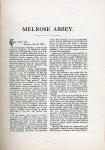 |
| 18 |
eur018 |
made in 1467, a label
informs us, and then on to the crown room to look at
the royal regalia which surrounds a
crown said to have belonged to
the immortal Bruce, and presents to our eyes
a most brilliant display of diamonds,
curiously wrought, especially one piece
representing King George and the
dragon; but diamonds could not long restrain us, and we enter
Queen Mary's room in which she gave birth to King
James, and we thought she could
scarcely have chosen a more
uncomfortable apartment for this grand chef d'ouvre.
Not more than 10x10 feet, and with
but one window in a deep
embrasure to afford light
and air. But it overlooked the bluff at its most tremendous point
of sheer precipice and suited well for the body to be lowered in a
basket to the hands of the Roman
Catholic priests who waited to receive and baptize him, in
spite of the covenanters.
From the castle we drive
to Colton Hill, which presents a
lovely view, but is styled by
our cabman appropriately, the
disgrace of Edinburgh, as its monuments
are unworthy the city or those to
whom they were erected.
Especially is this the case
with the Burns monument, which
we regret exceedingly having looked
upon.
But our temporary
disappointment is more than made up when we reach the
old palace of Holyrood, which her most
gracious majesty, Queen Vic, under
the influence of the
everlasting and all-powerful
sixpence, graciously invites us to enter.
Over the chief door we
enjoy an old crown of stone of immense size, and
doubtless of antique age. Passing
hastily through the long picture gallery filled
with uninteresting portraits of what
the painters imagined to be
the nations' sovereigns, we
stop not longer than to note that here the Pretender used to give
his dances, and passing through a
room hung with rich old tapestry, we reach at last
Queen Mary's audience chamber, in
which she held her stormy interview with the intrepid Knox, and
where, strange to say, we meet
familiar faces, and receive greetings of Asheville friends, to-wit:
Mrs. Frank Coxe and her son and
daughter.
In this chamber is the
bed of King
Charles I, and we rather prefer for our
use the one frpni which we
have just risen. Also we see the
ponderous and uncomfortable
chairs of the same monarch,
and thence we find entrance to Queen
Mary's bed chamber. (We forgot to say
that this story had been
reached by way of the
serpentine stairs of stone, of which
we have often seen prints.)
The chamber has in it the
bed of her majesty and| the quaint old table and work box, which 'held
her instruments of femine
work. Another, item of interest here
is the first mirror ever! Used in
Scotland, made of burnished
steel, which really made us look handsome, and probably
accounts for the glamour of beauty
which surrounds the dames of
those days.
Adjoining the bed chamber is a recess called a dining room, into which
Mary's
private stairway enters. It was up these
stairs the assassins came to murder Rizzio,
and, as the Queen was in the small
apartment at the time, they must
have passed within a few inches of
her
person. We can hardly see how she
can be defended from having consented thereto.
Descending the stone stairs we now enter
Royal Chapel, or the abbey proper of
Holyrood, now in ruins, but kept in good
order and under careful
supervision to prevent vandalism. In
one corner we see the hidden door to Mary's private
stairs where the assassins of Rizzio
entered on their horrible work intent. This abbey was founded in 1128
by David I, it is said, but our recollection of dates is
not good, and the architecture,
especially the designing of
the main entrance, shows us
the style of the early English.
At
this altar Queen Mary was married
to Darnley, and here rest
in the royal vault the remains of
many men and women of high
degree.
As
you may judge, to have seen and enjoyed
the matters related in these two letters have occupied most of the day,
and at 4 p. m., we return to our excellent hotel, allow our ladies an
opportunity to delight their souls
by stopping in what we would
call handsome and expensive
stores, but here they are all shops, and so after dinner we catch
a train for Melrose, and take a late view of this
wonderful old abbey which we will attempt
not to describe, but only to give ... |
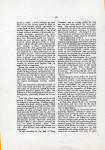 |
| 17 |
eur019 |
... you a faint impression
of the effect it produces upon us, as
at this moment we glance up from this line and view its
massive sublimity.
July 24.—In a retrospect of yesterday we find no room for joke or jest,
although many
funny things strike us of the
peculiarities of our entertainers, but
our heart is full of the old ruinous
Abbey of Melrose, to which we
hasten our return, to
complete the enjoyment cut
short by the late twilight of Monday.
Not venturing upon an
attempt at a description, which to us
seems sacrilege, we thought
to give some idea of the impression made upon ourselves, but this, too,
is a difficult task. It is not so much our mind as the heart and
affections that this wonderful production of past ages
works upon, and we tremble at
comparing what we are wont
to call religion in ourselves
with the years of devotion and
patient toil of these old monks, as,
without reward of men, they
with their own hand produced these marvels of beauty
as a token of their love to God, and
what they believed to be His
bride, the Catholic Church.
But even an attempt to write
our own feelings is met with the difficulty that every word that
we indite seems to us most flat and
commonplace.
How, then, can we hope to interest
even slightly our dear, far away friends ?
No, they must come themselves and
stand on the pavement covering thousands
of illustrious dead, over the very
spot where lies the silver casket containing the great heart of
King Robert the Bruce, which was
brought back from Spain
together with the body of his loving follower, the gallant Lord
James of Douglass, and both placed
near together under the east
window of what must then have
been their pride, the church of
their delight.
Near by we stand upon the
tomb of Michael Scott, the Wizard,
and trace with our finder the
dim outlines of the cross, said
to have been produced by the streams of moonlight through the
tra-ceried window at his head, a
legend most appropriate, we think, to the great alchemist.
Nor is the record confined alone to
prince and nobleman or men of high degree,
as the world then considered them,
but this tablet, which we hope you can
reproduce, gives evidence of the
genius of one John Morvo (now called Murdock), a master mason and
an excellent workman, from whom we fancy that some of our good friends
of that name both in Salisbury and
Asheville may have descended,
because be it remembered this
master mason is not said to have
been one of the monks to whom celibacy had charms, and our
friends seem surely to have inherited his talent in stone work. The
tablet reads in quaint old English characters:
SA GABS YE COMPASS EVEN
ABOUT, SA TRUTH AND LAUTE DO BUT
DOUTE. BEIIALDETO YE HENDE Q
JOHN MOR VO.
In similar letters another
tablet tells who John Morvo, Morrow or Murdock
was as follows:
"John .-Morrow : Some Tyme : Callit
was: I: and Born: in Parsayee: certainly and had: in: Keeping: all:
Mason: Work
of:Santarn : Druys: YE: HVE : Kirk of
Glasgu: Mclros: and : Pasley : of: Nyd-desdayll: and: of: Glasgo w: I:
Pray: to God: and: Mary: baith : and: Sweet: St.
John : Keep : this : Holy : Kirk : frac : SKAITH."
Near by we kneel upon the old kneeling
stone of some sainted man
and look at the horseshoes with which even then he thought to banish
evil spirits, and we obeyed his injunction to "Pray for the soul of
Peter the Treasurer," and also stand upon a slab covering one of our
own ancestors, which is inscribed in
"Memoire of guid dame Margaret Kerr."
The marvelous carving and
tracery in stone which we see still
preserving its fresh beauty all around us, fills us with
admiration, almost we had said, awe—
all of it is of such exquisite delicacy and
endless variety.
Crowning one of the
columns at a height that requires care to distinguish
it, appears a most graceful feminine hand,
holding a bunch of flowers worthy
their holder. We were struck
with the difficulty we had in finding this, even with ...
|
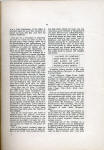 |
| 20 |
eur020 |
our guide's assistance, and then with the
fascination it had for us
when once our eye became educated to
seek it out from among its
surrounding beauties. We did not wonder that Sir Walter Scott had
it reproduced to ornament his
residence. Nor is it only the
delicacy of its traceries
which we note with wonder, but the stupendous
magnitude of the work. A portion
of the roof, which still stands, is
composed of slabs of stone which we
estimate to be at least ten inches in thickness
and several feet in length, while jutting
out from its lower edge is well preserved
an image in stone of "The Pig and
the Bagpipe," which, we suppose,
showed the estimate put upon
the national instrument by
the old fathers, that its
strains were identical with the squealing
of a pig, in which opinion we concur. High up in the transept we
are startled to see suspended two
weighty stones threatening us with destruction. But the
same cords which held them first will
continue to do so; and
besides, remember they are quite modern, being the
weights that propel the clock,
placed there only some 400 years ago and still
faithfully warning men of the
inevitable lapse of time.
An
hour is as much as we can give this
old abbey, so we cannot do
more than glance fit its wonderful
Triforium or passage in the body of its massive walls
'round which the choir boys used to
march, their sweet chanting
reaching the open air as they
encompass the numerous windows. This is hard to explain
and marvelous to behold.
And
now we drive over a perfectly exquisite
road along the peaceful banks of the Tweed and arrive at Abbottsford,
the home of the Wizard of Scotland. The situation and surroundings
of the mansion disappoint us, being
very low and disagreeably
damp. But all regret is removed
upon entering and viewing the
immense number of relics of
inestimable value with which the great author surrounded himself
and made his arduous labors joyous.
We have no idea of giving you
a dry catalogue of these, but merely
mention a few which most pleased us.
The study, first entered, is our beau
ideal of such a room, to which the student
descended by a balcony and stairs
from his chamber. In it are his"chair and
small desk, the latter made of the wood
of
the Armada, and a handsomely inlaid
chair, made of the wood of Robroyston,
or
the house in which Wallace was betrayed.
Pacing the author was a portrait of
his favorite, Rob Roy.
In the adjoining library
we see a bust of Scott by Chantry,
and, of course, beautiful in
workmanship; a cabinet of valuable
relics, among them the crucifix held
by poor Queen Mary as she
went to execution ; several trophies meanly captured from the
great Napoleon at Waterloo; and a
reminder of the dear Old North
State in a purse embroidered by
Flora McDonald, Rob Roy's
purse, Helen McGregor's
brooch, and many others.
Next, the drawing room, hung with papering
of Chinese work and design, and
surrounded with numerous
portraits, of which we can only
mention "Sir Walter and His
Dogs," by Raeburn, and portraits
of his mother, wife and daughters, and a most realistic painting ot the
head of Queen Mary, taken
immediately after it was
severed from her lovely person, by Cawood, who obtained permission from
Queen Elizabeth, to do his
ghastly work.
The armory adjoining the drawing room has its walls literally covered
with
weapons of all kinds, ages and designs.
Many of them historical such as the gun
of
Rob Roy, marked with his initials, his
sword; an elegant case of daggers of
King Charles; also the keys of Lock
Leven castle, fished up out of its depth of
waters; keys of the old Tolbooth; thumb
screws, used as tortures
in those cruel days. Also some most
interesting pen sketches,
such as Queen Elizabeth dancing; quite a ludicrous
representation of her majesty
renowned for her ruffs, and a pen scene of "The Feast of the Spurs,"
in which the highlanders' feast is blessed by the monk, but on the
covers being raised, only a pair of
spurs is seen, indicating an empty larder. One of the gallants
(the
story goes) hastens to the lowlands
to refill the bill of fare, is captured, sentenced to death, but
offered his liberty if he will marry "Mucklemouth Meg;" and the
next sketch shows this scene, and
well depicts the gallant's disgust
; but after reflection he preferred the
embraces of his homely bride to
those of a halte*-, and thus
gave rise to the family of Scott, Sir Walter himself being a di-
... |
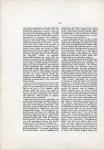 |
| 21 |
eur021 |
rect descendant of this curious marriage.
In a word more we must cut
short our description, by saying everything combined to carry out the
thought, which good Sir Walter has
inscribed around the beautifully carved ceiling of his entrance
hall, in old English type:
"These be the Coat
Armouries of ye clannies and men of name quha (who) keep it the
Scottish Marches in ye days of
auld. They were worthie in their
tyme, and in their defens God thaim
defended."
A
brisk drive brings us back to Melrose
station to catch a fast train, which
gives us a chance to enjoy
an English railroad dinner at Leeds, and thence to
Birmingham, where an hour's waiting"
allows only a walk through its magnificent
station, covering with its glass
arches nearly fifteen acres of floor, as we
estimate by counting our
steps; its roof supported on eight lofty arches, framed of iron, each of
one hundred feet span. How impressive and instructive, in one day to
behold the stupendous work of the
old monks of Melrose, and the equally stupendous station of
to-day. Query: Which labor was calculated to do most
practical good in time and eternity?
Eternity alone can give the
answer.
From
Birmingham to Coventry, where we lodge at the Queen's hotel right royally,
and will continue the story of our
rambles in our next.
|
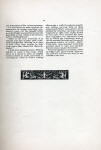 |